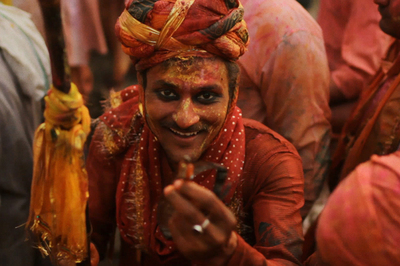The memory of Vijay Iyer heaving his whole multipurpose piano toolbox into the improvisational pit live with Wadada Leo Smith (and on many recordings) made his restraint with a string quartet and a small orchestra all the more striking.
Iyer first staged his "Mutations I-X" in 2005, and he obviously still considers it some of his best work, having released a recording of it this year on ECM. Still boyish at 43, perched on his piano stool behind the string quartet, he fixed the four with a hawklike stare, twitching and gesturing along with their strong opening strokes and simple, Philip Glass-like arpeggios. As their energy built, Iyer held back for 10 minutes before inserting his own surprisingly gentle, almost Zep-folkish riffs and moth-wing trills. The density built; a low-end electronic loop provided a foundation; a pagan dance emerged after the piano receded. And the audience stayed locked in, responding to the music's focused discipline, invitation and comprehensibility. Athough Iyer can go as abstract as anybody, this lean suite about genetic evolution imposed order on a chaotic universe.
Iyer followed with the wider palette of the 10-piece International Contemporary Ensemble, conducted by Steven Schick, to realize the music he'd composed to accompany Prashant Bhargava's impressionistic film "Radhe Radhe: Rites of Holi," inspired by Stravinsky's "Rite of Spring." Both the film (which screened above the musicians) and the sounds did justice to Igor: the images with a balletic documentation of an ancient Indian fertility rite, the music more obliquely, with bassoon and oboe parts, along with occasional percussive hits, raising echoes of the 100-year-old symphonic phenomenon.
The music didn't try to compete with Bhargava's eye-scorching colors and rapid cuts from dough makers to wheat fields to revelers hurling tinted dust; it was more like the often melancholy and static score played the part of death to complement the film's ritual sex dance. Even if that made listening take second place to watching, the combination worked subliminally. So when the mature goddess Radhe, who appeared at intervals throughout, was subjected at the end to an implied symbolic gang rape at the hands of youth, we felt not so much Stravinskian violence as mythic distance and resignation. Along with continued admiration for the subtle art of Vijay Iyer.

